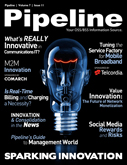|
|

By
Tim Young
Ah, the springtime. Birds singing, invigorated from their winter vacations. Sprouts struggling to stretch their fragile bodies away from the chilly earth and towards the warming sun. The sounds and smells of rebirth.
It’s a great time, no? A time for inspiration, introspection… and maybe a little innovation? Now that’s a rare beast. Given the chilly economic climate that has persisted longer than a Chicago winter, we’ve seen many a market-watcher proclaim that innovation on the communications IT side, the traditional purview of OSS/BSS, has been muted by risk-aversion. A conversation with at least one C-Level in the space concluded with the determination that innovation hasn’t been a big part of the story for some time.
But is that changing? Do we sense a parting of the status quo clouds, letting a little sunlight fall on the communications IT space?
To answer that question, I reached out to some of the top analysts working in the industry today to get a sense of what they
|
|
Given the chilly economic climate, we’ve seen many proclaim that OSS/BSS innovation has been muted by risk-aversion. |
|



Those standards
have come from myriad organizations
and formal or informal standards
bodies, according to Mortensen, who
cites J2EE and Microsoft .NET
|
|
|
|
|

thought was innovative in OSS/BSS right now, and where the hype of innovation may be more prevalent
than true foresight.
The Drivers
To get a handle on the innovative technologies and markets under the OSS/BSS umbrella, I first wanted to get a sense of what the analysts thought were the motivating factors driving innovation among these IT vendors.
“As usual,” said Mark Mortensen,
Principal Analyst in the Telecoms
Software division of Analysys Mason,
LTD., “innovation is driven by the
confluence of operator business needs
and new software techniques,
middleware, and de facto standards
that allow vendors to tackle problems
that they could not before – or tackle
them more cheaply.”
|
|

architectures, TMF SID standards, and
SOA interfaces as notable contributors
to this climate of innovation. “These
together have allowed vendors and
systems integrators to integrate
formerly disparate systems together to
provide effective flow-through
operations processes,” said Mortensen.
However, there is a more external and less-optimisticly-worded idea of what’s driving vendors towards innovation, as well.
“I believe that what's driving innovation for service providers and the vendors that support them is fear,” said Nancee Ruzicka, Senior Research Analyst in Stratecast’s (a division of Frost & Sullivan) OSS Competitive Strategies group. “We've all talked about the need for transformation and the business changes that are critical to the future of this industry for ten years or more but it seems that perhaps now really is the time.”
|
|
|







